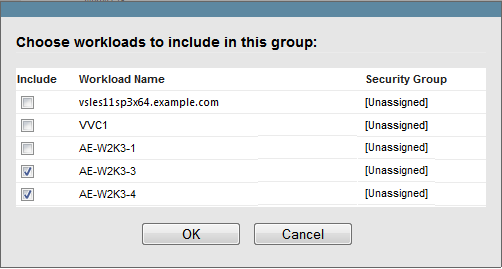2.3 Setting Up User Authorization and Authentication
The following information is included in this section:
2.3.1 About PlateSpin Forge User Authorization and Authentication
The user authorization and authentication mechanism of PlateSpin Forge is based on user roles, and controls application access and operations that users can perform. The mechanism is based on Integrated Windows Authentication (IWA) and its interaction with Internet Information Services (IIS).
The role-based access mechanism enables you to implement user authorization and authentication in several ways:
-
Restricting application access to specific users
-
Allowing only specific operations to specific users
-
Granting each user access to specific workloads for performing operations defined by the assigned role
Every PlateSpin Forge instance has the following set of operating system-level user groups that define related functional roles:
-
Workload Protection Administrators: Have unlimited access to all features and functions of the application. A local administrator is implicitly part of this group.
-
Workload Protection Power Users: Have access to most features and functions of the application, with some limitations such as restrictions in the capability to modify system settings related to licensing and security.
-
Workload Protection Operators: Have access to a limited subset of system features and functions, sufficient to maintain day-to-day operation.
When a user attempts to connect to PlateSpin Forge, the credentials provided through the browser are validated by IIS. If the user is not a member of one of the Workload Protection roles, connection is refused.
Table 2-1 Workload Protection Roles and Permission Details
|
Workload Protection Role Details |
Administrators |
Power Users |
Operators |
|---|---|---|---|
|
Add Workload |
Allowed |
Allowed |
Denied |
|
Remove Workload |
Allowed |
Allowed |
Denied |
|
Configure Protection |
Allowed |
Allowed |
Denied |
|
Prepare Replication |
Allowed |
Allowed |
Denied |
|
Run (Full) Replication |
Allowed |
Allowed |
Allowed |
|
Run Incremental |
Allowed |
Allowed |
Allowed |
|
Pause/Resume Schedule |
Allowed |
Allowed |
Allowed |
|
Test Failover |
Allowed |
Allowed |
Allowed |
|
Failover |
Allowed |
Allowed |
Allowed |
|
Cancel Failover |
Allowed |
Allowed |
Allowed |
|
Abort |
Allowed |
Allowed |
Allowed |
|
Dismiss (Task) |
Allowed |
Allowed |
Allowed |
|
Settings (All) |
Allowed |
Denied |
Denied |
|
Run Reports/Diagnostics |
Allowed |
Allowed |
Allowed |
|
Failback |
Allowed |
Denied |
Denied |
|
Reprotect |
Allowed |
Allowed |
Denied |
In addition, PlateSpin Forge software provides a mechanism based on security groups that define which users should have access to which workloads in the PlateSpin Forge workload inventory.
To set up a proper role-based access to PlateSpin Forge:
-
Add users to the required user groups detailed in Table 2-1. See your Windows documentation.
-
Create application-level security groups that associate these users with specified workloads. See Managing PlateSpin Forge Security Groups and Workload Permissions.
2.3.2 Managing PlateSpin Forge Access and Permissions
The following sections provide more information:
Adding PlateSpin Forge Users
Use the procedure in this section to add a new PlateSpin Forge user.
If you want to grant specific role permissions to an existing user on the Forge VM, see Assigning a Workload Protection Role to a PlateSpin Forge User.
You can now assign a workload protection role to the newly created user. See Assigning a Workload Protection Role to a PlateSpin Forge User.
Assigning a Workload Protection Role to a PlateSpin Forge User
Before assigning a role to a user, determine the collection of permissions that best suits that user. See Table 2-1, Workload Protection Roles and Permission Details.
It might take several minutes for the change to take effect. To attempt applying the changes manually, restart your server by using the RestartPlateSpinServer.exe executable.
To restart the PlateSpin Server:
-
Before you attempt to restart the PlateSpin Server, pause all of your contracts, or verify that no replications, failovers, or failbacks are in process. Do not continue until all workloads are idle.
-
Go to the PlateSpin Server’s bin\RestartPlateSpinServer subdirectory.
-
Double-click the RestartPlateSpinServer.exe executable.
A command prompt window opens, requesting confirmation.
-
Confirm by typing Y and pressing Enter.
You can now add this user to a PlateSpin Forge security group and associate a specified collection of workloads. See Managing PlateSpin Forge Security Groups and Workload Permissions.
2.3.3 Managing PlateSpin Forge Security Groups and Workload Permissions
PlateSpin Forge provides a granular application-level access mechanism that allows specific users to carry out specific workload protection tasks on specified workloads. This is accomplished by setting up security groups.
-
Assign a PlateSpin Forge user a Workload Protection Role whose permissions best suit that role in your organization. See Assigning a Workload Protection Role to a PlateSpin Forge User.
-
Access PlateSpin Forge as an administrator by using the PlateSpin Forge Web Interface, then click Settings > Permissions.
The Security Groups page opens.
-
Click Create Security Group.
-
In the Security Group Name field, type a name for your security group.
-
Click Add Users and select the required users for this security group.
If you want to add a PlateSpin Forge user who was recently added to the Forge VM, it might not be immediately available in the user interface. In this case, first click Refresh User Accounts.

-
Click Add Workloads and select the required workloads:

Only users in this security group will have access to the selected workloads.
-
Click Create.
The page reloads and displays the your new group in the list of security groups.
To edit a security group, click its name in the list of security groups.